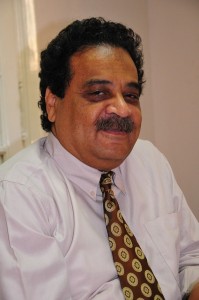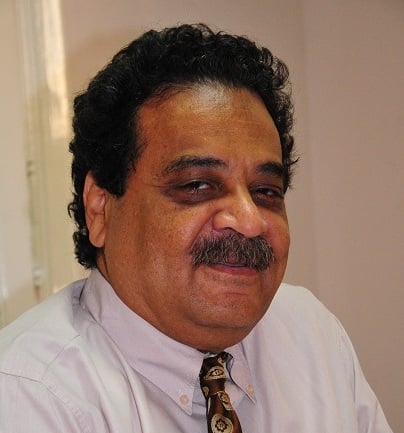
Leaders of the 1952 family start taking power through alliance with the Muslim Brotherhood. Naguib, Nasser and El-Sadat did this. Finally, the Supreme Council – Al-Sisi followed. Even Mubarak, who began to clash with political Islam because it came to power – and the trend that was found guilty for the assassination of El-Sadat, allied with the political Islam shortly after taking power.
It was considered one of the perpetrators of the international coalition’s strategy, which the US led against the Soviet Union in Afghanistan. It was known that one of the pillars of this alliance, or rather its most radical combat fronts, was radical political Islam.
As the US embraced the Muslim Brotherhood and others in Afghanistan, Mubarak had to implement the same policy in Egypt, despite all the rivalry between him and Islamic forces. We believe that what Minister of Interior Abdel-Halim Moussa was doing with negotiations and reconciliation with extremist groups, was under the knowledge and guidance of Mubarak. Leaving these groups revel across the country to an extent of announcing the Islamic Republic of Imbaba and the Islamic Republic of Minya and others, during Mubarak’s regime, was necessary for Mubarak to be able to “deport” many young Egyptians for jihad in Afghanistan.
To understand the size of Egypt’s contribution to the Afghan war, we have to point out that some estimate up to 5,000 Egyptian members of Islamist groups who sacrificed their lives under the CIA’s leadership and supervision.
The reason for the alliance between the leaders of the 1952 family and Islamic extremist groups is the same reason for the US’ alliance with them in Afghanistan.
These groups, especially the Muslim Brotherhood, constitute what might be described as the “quasi-fascist strategic plan B”. The strategic reserve is able to rein in any revolutionary developments that could lead to any potential democratic or progressive political alternative. This radical reserve could be an ally of the US. As these political Islamic forces can assist the radical and conservative regional and international forces, they can also help these same forces at a domestic level.
Leaders of the 1952 family were constantly in alliance with the Muslim Brotherhood at the start of their rule and during transitional periods. Cutting this alliance was also a constant each time, which happened shortly after their rule. Both parties would take advantage of each other from the first moment and use each other to rule the country alone. The presidents of the 1952 family would each time try to re-create the regime, while the Muslim Brotherhood would attempt to establish a religious state.
Breaking the alliance usually occurs when the Muslim Brotherhood feels that they have become powerful enough to oust the president and take power. Only the Muslim Brotherhood participated in the amendments of the constitution in 2011. In other words, only they took part in the political path after the revolution. The Supreme Council [of the Armed Forces] (SCAF) approved of the parliament’s legitimacy in 2011 and that of President Mohammed Morsi. It and Al-Sisi also approved Tantawi’s dismissal. Al-Sisi tried several times to cooperate with Morsi and gave the Muslim Brotherhood more than one chance to avoid the people’s rage.
Since the Constitutional Declaration supplement in 2012, the Brotherhood thought they got hold of power through all their techniques. They also thought they could eliminate conflicts by using their legitimacy, international assistance, and the opinion on the streets, as well as some techniques that would help them be in control of the government organs.
After Khairat Al-Shater refused any settlement on the road map and to promise the Rabaa sit in dispersal within a time frame, Al-Sisi had no choice but to disperse the Rabaa protests using force, especially after Morsi’s negative speech which responded to all the settlements offered as if it was a start of war between 30 June and 26 July.
But where were all the democratic parties during this alliance between the Supreme Council-Al-Sisi and the Muslim Brotherhood? Did they take part in breaking this alliance?
A large number of parties were very cautious and sometimes refused any president from the 1952 family. On one hand, it was because the new president was from the military, and that he will be like his predecessors. On the other, it was because the new president would rule the country during a time of crisis and public opinion will be hard to ignore each time a new president takes power. S
Some hope there is potential for positive change in social equality or in democracy. However, this hope and optimism quickly fades when the new president conflicts with the Muslim Brotherhood.
One of the main reasons behind the weak relations between new presidents and any political democratic party is his alliance with the Muslim Brotherhood. Some of the political democratic parties, which refuse the military regime and think the Muslim Brotherhood can take part in politics, believe this alliance is a betrayal by the latter. The third party believes the alliance between the military and the Muslim Brotherhood is not out of context, and both want to establish a dictatorial state, and both of them are rejected by the people.
Democratic parties refuse an alliance of presidents from the 1952 family with the Muslim Brotherhood and play a big role in breaking the alliance. The Muslim Brotherhood were also accused of allying with the SCAF when protests were chanting “down with military rule”, while the SCAF was accused, a few weeks later, by some democratic parties of alliance with the Muslim Brotherhood when protests were chanting “down with supreme guide rule”.
The new president seems weak and unconfident, and Egypt’s conditions are instable. The man with the military background, accustomed to running the country through orders, finds himself in an arena full of different opposing opinions and speculations. Thus, in the middle of all the mess, there is only one organised force, the Muslim Brotherhood. All democratic forces look scattered without a united leadership, making it impossible to reach an agreement with them. He finds himself compelled to ally with the Brotherhood, according to the discretion of those who considered the fragmentation of democratic forces is what made the “Supreme Council – Al-Sisi” ally with the Brotherhood at the beginning, which made Al-Sisi ignore democratic forces.
We will try to understand matters more clearly by answering this question: to what extent is the president responsible for allying with the Brotherhood because of his background and vision? And to what extent are democratic forces responsible for pushing him towards this alliance because of their fragmentation and lack of organisation?
Presidents of 1952, without an exception, used to complain about the dispersion of political parties due to their military background and the kind of agenda or state they’re trying to restore.
Saying that they should be different implies a misunderstanding of the whole idea of “a political party”. The Brotherhood is one party among many, but assumptions the president is allying with the Brotherhood because they’re the strongest party are very inaccurate.
The question now is: how will Al-Sisi build his relationship with politicians and politics the coming period? What helped form his current predictable situation? And what are the variables that can lead to a change in that situation?




